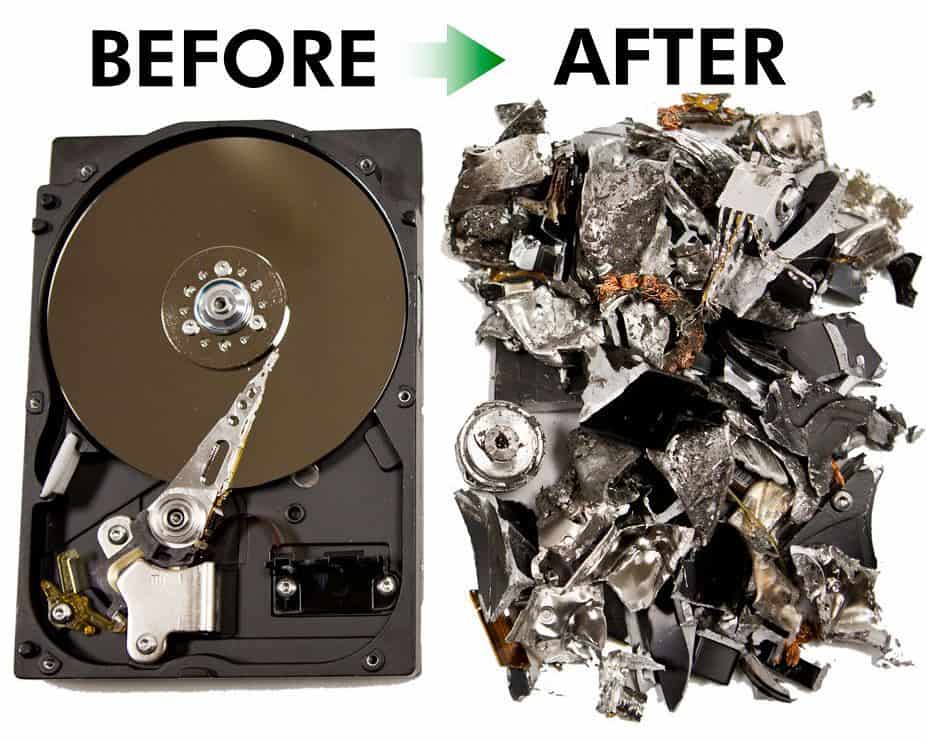Important Cyber Security Practices for Effective Data Destruction Strategies
Important Cyber Security Practices for Effective Data Destruction Strategies
Blog Article
The Value of Effective Data Destruction Practices in Shielding Sensitive Information and Ensuring Computer Safety
In an era where data violations are progressively common, the value of efficient data devastation methods can not be overemphasized. Implementing durable information damage techniques not only mitigates these dangers however likewise lines up with legal compliance demands, guaranteeing that companies copyright their credibility and foster customer trust fund.
Understanding Data Destruction
Understanding information destruction is vital in today's electronic landscape, where sensitive info can quickly be endangered. Efficient information destruction entails not just erasing data yet guaranteeing that information is irretrievable with comprehensive approaches. This process is crucial for organizations that handle private customer information, copyright, or inner papers, as any kind of breach can result in serious monetary and reputational consequences.
Data destruction incorporates numerous strategies, including shredding physical media, degaussing magnetic storage tools, and using software-based remedies that overwrite information numerous times. Each approach offers a particular function and has to straighten with the sensitivity of the details being dealt with. Physical damage is usually preferred for tough drives including extremely personal information, while software application approaches might be sufficient for less delicate info.
Additionally, sticking to industry requirements and guidelines, such as the General Information Security Regulation (GDPR) or the Wellness Insurance Policy Transportability and Accountability Act (HIPAA), is critical for compliance and to alleviate legal threats. Organizations needs to create a durable information devastation plan, train staff members on best methods, and on a regular basis investigate their treatments to ensure that all sensitive details is disposed of safely and effectively.
Risks of Inadequate Practices
Poor data destruction practices reveal organizations to significant dangers that can have far-ranging repercussions. When delicate info is not correctly dealt with, it stays vulnerable to unapproved access, which can bring about data violations and identity theft. Such cases not just endanger the security of individuals however also stain the company's credibility, causing a loss of consumer trust fund and potential monetary effects.
Additionally, regulative conformity is significantly rigid in lots of sectors. Failure to follow information devastation policies can lead to substantial penalties and lawful activities versus companies. These fines can stress funds and divert focus from core business operations.
Furthermore, the abuse of recurring information can result in copyright burglary or business reconnaissance, jeopardizing competitive advantages (data destruction). The influence of poor data destruction expands beyond immediate financial losses; it can additionally cause long-term damage to brand stability and market setting

Organizations should recognize that data safety and security is not entirely concerning stopping breaches; it additionally encompasses the liable monitoring of information throughout its lifecycle. Disregarding effective data destruction procedures can have devastating effects, emphasizing the requirement for durable procedures to reduce these threats.
Finest Practices for Information Devastation
Implementing efficient data destruction practices is vital for securing delicate details and preserving compliance with governing standards. Organizations ought to adopt a multi-faceted approach to guarantee that information is irretrievable, therefore stopping unapproved access and potential violations.
First, data must be classified based on level of sensitivity, allowing organizations to use ideal destruction methods customized to the degree of risk. For electronic data, utilizing software-based data-wiping tools that abide by industry requirements can successfully overwrite existing information. Physical destruction approaches, such as shredding or degaussing, are important for devices that keep delicate details, guaranteeing total eradication.
Developing a clear information retention policy is vital, detailing for how this link long different kinds of details ought to be kept before devastation. Regular audits of information storage space systems are additionally necessary to identify obsolete or unneeded information Get More Information needing elimination.
Furthermore, training workers on the significance of information destruction and the details protocols to adhere to fosters a society of safety and security within the company. Keeping documentation of information damage processes provides accountability and supports conformity with inner plans and outside laws. By sticking to these best practices, organizations can substantially reduce the risks connected with data direct exposure.
Legal and Compliance Considerations

Failing to follow these policies can cause severe fines, consisting of considerable penalties and reputational damages. Organizations must implement a robust information damage plan that lines up with these lawful frameworks and offers clear standards on the correct methods of information disposal, whether physical shredding or digital wiping.
Moreover, preserving documents of information damage tasks is crucial for showing compliance during audits or examinations. By focusing on legal and compliance factors to consider, organizations can enhance their information safety pose and foster depend on with stakeholders and customers, eventually adding to an extra secure data monitoring environment.
Benefits of Effective Information Damage
Reliable data destruction techniques prolong beyond mere conformity; they offer substantial benefits to organizations that prioritize them. By ensuring that delicate details is irretrievably damaged, companies mitigate the danger of information breaches and the potential monetary consequences related to them. This proactive technique not just safeguards against unapproved gain access to but also enhances the general trustworthiness of the company in the eyes of stakeholders and customers.
Implementing robust data devastation approaches, such as physical destruction of storage devices or innovative information cleaning strategies, adds to the conditioning of a company's cybersecurity stance. data destruction. It lowers the probability of copyright theft and protects proprietary information, therefore keeping a competitive edge in the marketplace

Final Thought
In verdict, effective data destruction methods are necessary for safeguarding sensitive details and improving total Home Page computer security. By implementing thorough techniques such as software application, degaussing, and shredding overwriting, companies can alleviate the threats related to unauthorized access and information violations. Adherence to governing standards, consisting of GDPR and HIPAA, further enhances compliance and shields against lawful consequences. Ultimately, a dedication to durable data damage techniques promotes a culture of responsibility, thereby enhancing an organization's cybersecurity pose and maintaining client trust.

Report this page